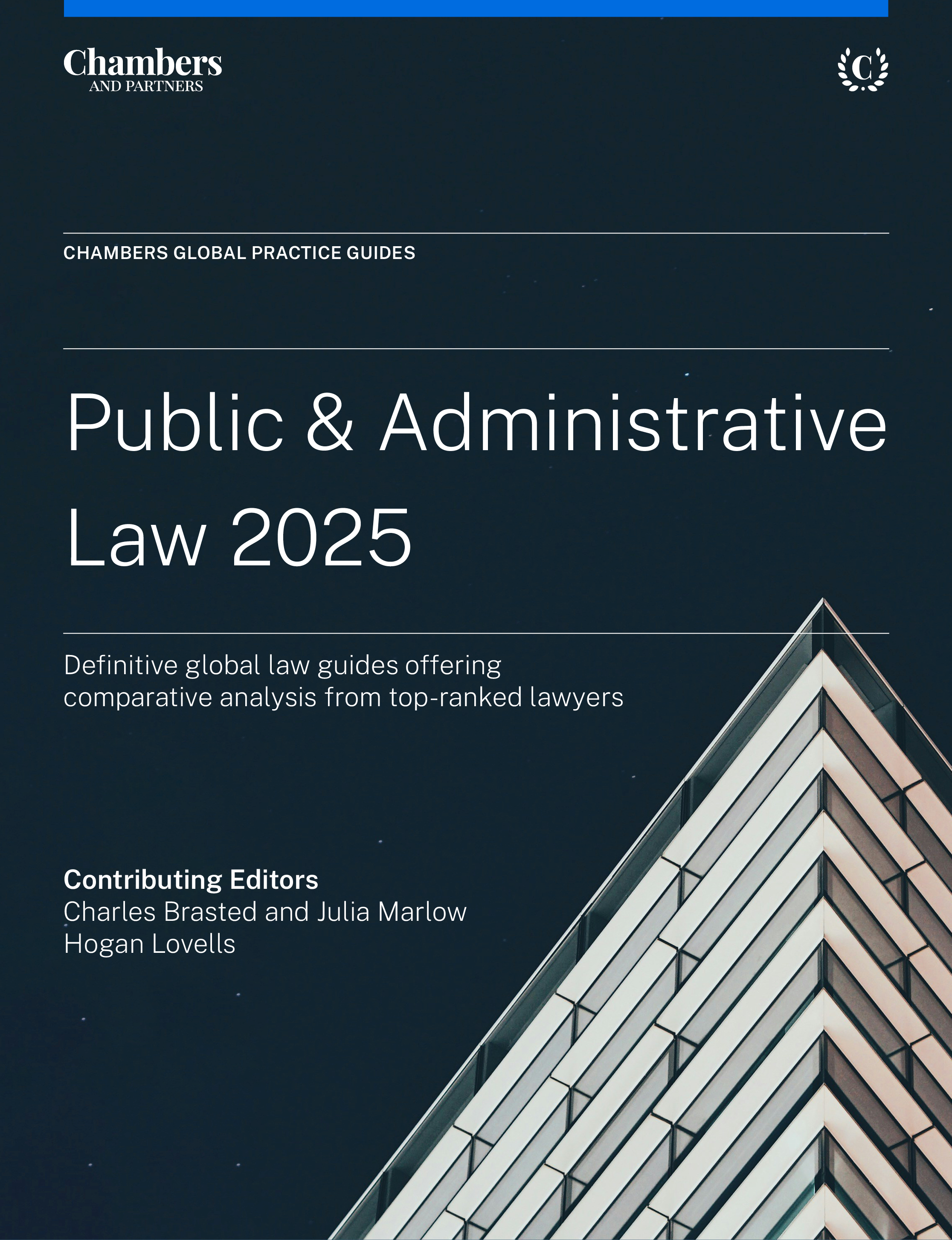
Public & Administrative Law 2025
The new Public & Administrative Law 2025 guide feature more than a dozen key jurisdictions. The guide provides the latest legal information on the judicial review of public law decisions, including available forums, determining susceptibility to challenge, the importance of the nature of both the decision and the decision-maker, grounds for review, legislative/contractual limits on judicial review, and procedural questions.
Last Updated: April 15, 2025
Compare law and practice by selecting locations and topic(s)
Select Locations

Select Topic(s)

Please select at least one location and one topic to use the compare functionality.
Global Overview – Administrative and Public Law in 2025
Introduction
Administrative and public law reflects the political, societal and constitutional settlement underpinning the legitimacy of each nation State, embodying the distinctive system of governance of that State and its people. As such, it is fundamental to the relationship between State and citizens. It provides the framework for the exercise of governmental and legislative power, and the mechanisms for the exercise of those powers to be challenged by those affected and supervised by the courts.
While administrative and public law is principally domestic, business, governments and their legal advisers need to consider international legal and policy trends. That is both because many of the most pressing policy issues are inherently global in nature, and therefore raise policy questions about national divergence and international coherence, as well as because domestic administrative and public law is increasingly called upon to vindicate international legal standards and obligations.
The growing importance of administrative and public law
A number of global trends are driving the increasing importance – and prominence – of administrative and public law, for both the private and public sector. Those include the tension between the growing pressure on governments to demonstrate systemic change on fundamental issues such as geopolitical and trade relationships, freedom of movement, and the role and scale of the State coupled with rapid developments in technology. This tension creates both novel and convergent areas of risk and opportunity, and a consequent need for regulation to balance competing interests.
In a complex and uncertain policy environment, the rule of law is a critical factor in businesses’ strategies: transparency and foreseeability are significant factors in investment decisions, and businesses are increasingly focused on the opportunities to shape that policy environment. Administrative and public law is central to businesses’ ability to foresee, shape and challenge government decision-making.
At the same time, businesses that perform significant public functions in their own right are increasingly being challenged in reliance on administrative and public law. The distinction between government regulation and private enterprise is becoming progressively blurred, with non-governmental entities, such as businesses that manage critical financial market infrastructure and online platforms, taking on the responsibility of establishing and enforcing rules governing market access and user behaviour on the markets for which they are responsible. Attempts to challenge the actions of such bodies using administrative and public law are resulting, in certain jurisdictions, in a broadening of the application of these principles to private businesses, extending their reach beyond traditional boundaries.
These factors also continue to shape administrative and public law.
- The impact and value of public decisions has driven growth in commercial legal challenges, including novel attempts to broaden the scope of challengeable decisions and the recoverability of significant financial recompense.
- Those cases have also caused the courts to have to consider the application of fundamental legal principles to highly commercial contexts and the interplay between public and private law.
- In consequence, governments have adapted their approach to defending claims (including accepting greater levels of litigation risk when making policy) and sought to constrain legal challenge mechanisms.
These shifts are also affecting the practice of administrative and public law, such as the growing use of disclosure and expert evidence and more commercial approaches to advocacy.
Complex and changing policy environment
The ways in which governments interact with their citizens and businesses are constantly evolving, as the role of government changes to meet the challenges of a rapidly changing world.
- Shifting geo-political landscapes – States are increasingly implementing measures to guard against foreign influence in their economies and politics, including controls on foreign direct investment, particularly in critical national infrastructure, and sanctions.
- Pursuit of growth – The scale of the regulatory burden on businesses continues to be viewed by States as a policy lever to strike the appropriate balance between innovation and growth, on the one hand, and public interest protection (eg, of consumers and the environment) on the other. In many jurisdictions, governments are seeking to consolidate and streamline regulations, and to put additional pressure on regulators to prioritise growth.
- Digital and technological transformation – The rise of innovative industries has prompted governments – and supranational organisations, such as the EU Commission – to design new forms of regulation to tackle the twin policy challenges of protecting citizens and facilitating growth posed by digitalisation, online platforms, artificial intelligence (AI), and other emerging technologies. Those challenges are inherently international but there is little harmonisation of approach or even regulatory philosophy. As governments grapple with their approach to these challenges and the balance between consistency and competitive differentiations, global digital businesses need to adopt internationally coherent approaches to engaging with governments and regulators.
- Environmental and societal imperatives – Administrative and public law is increasingly being leveraged in the climate change debate, as governments seek to adapt domestic policy to their political views, and/or international treaty obligations, and activists on both sides of the debate respond to that through the use of novel legal challenges. For example, in a landmark judgment in 2024, the European Court of Human Rights found Switzerland in breach of its positive obligations under Article 8 of the European Convention on Human Rights (concerning the right to private and family life) to tackle climate change due to failures to establish a relevant domestic regulatory regime and to meet emission reduction targets.
- Limited resources and legislative and policy-making capacity – All of the factors above are driving governments to place increasing reliance on regulators and the private sector for policy delivery.
Changes to administrative and public law
Against this backdrop, the role of administrative and public law in holding government and regulators to account is an increasingly important part of many businesses’ commercial strategy. Legal arguments based on traditional administrative and public law and human rights principles are being adapted and deployed in increasingly commercial contexts. Perhaps one of the most significant aspects of this trend has been the growing use of administrative and public law to seek substantial financial remedies against governments, regulators and private bodies performing public functions. For example, in the recent UK case of Elliott Associates v The London Metal Exchange [2024] EWCA Civ 1168, in which international investors were seeking significant damages against a privately owned investment exchange on human rights grounds, the courts had to examine closely the impact of the commercial and contractual context on the relevant property rights. The growing willingness of the courts to award damages is not, though, limited to the commercial context (see, for example, Canada (Attorney General) v Power, 2024 SCC 26, in which the Supreme Court of Canada held that the government could be liable to pay damages for bringing forward legislation that was later found to be unconstitutional).
At the same time, courts in a number of jurisdictions have revisited established doctrines to adapt to contemporary challenges. For instance, recent judgments in the United States (Loper Bright Enterprises v Raimondo, 22 U.S. 451 (2024)) and Canada (Auer v Auer, 2024 SCC 36) have redefined standards of review for governmental decisions, reducing the deference traditionally afforded to regulators.
In response to this, there has been a clear trend of governments accepting a higher level of administrative and public law risk, and adopting a more robust approach to defending their decisions. There is also a notable trend of legislative attempts to limit the availability of mechanisms for the courts to review governments’ decisions (see, for example, Mexico’s prohibition on judicial review of constitutional amendments).
As administrative and public law litigation becomes more commercial, its practice increasingly mirrors that of commercial litigation (see, for example, R (British Gas Trading and E.ON) v Secretary of State for Energy Security and Net Zero [2025] EWCA Civ 209). This includes not only the deployment of extensive evidence but also the growing use of requests for information, disclosure and expert evidence.
Conclusion
Pressures on governments and regulators to demonstrate change and promote economic growth can lead to calls for the curtailment of checks and balances. However, administrative and public law has generally shown itself to be resilient in the face of such calls. That is not least because it serves valuable functions for governments, as well as for the citizens (and businesses) that it exists to protect. First, administrative and public law provides the framework for demonstrably robust decision-making, and for governments and legislators confidently to delegate important decisions to expert regulators and other bodies. Secondly, the foreseeability and protections that it provides are key to attracting and retaining inward investment, and therefore to achieving governments’ growth and change objectives.

